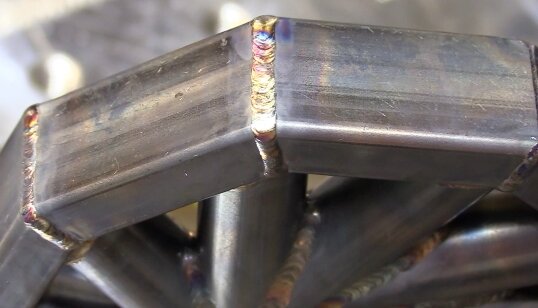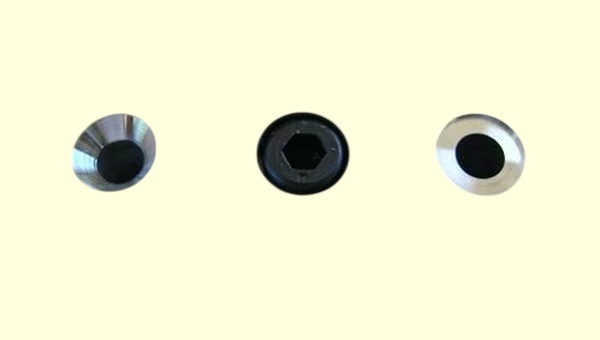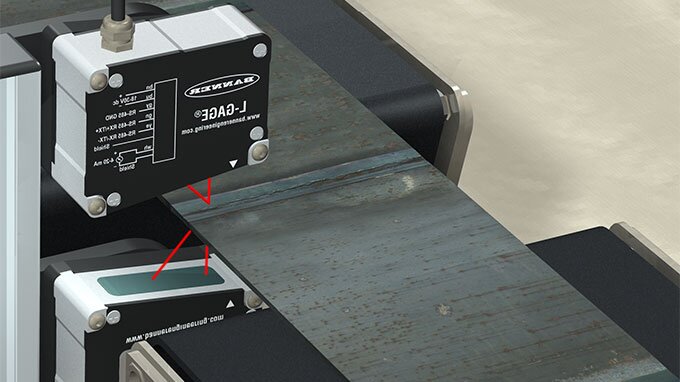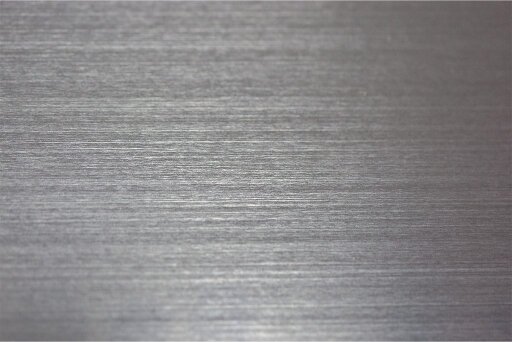Bronze, brass, and copper are well known for their superior corrosion resistance and electrical conductivity. Each material is used in various fields, from technological gadgets to sculptures to stylish architecture.
Therefore, it is essential to understand the differences between these metals so that you can choose the most suitable material for your project. This post aims to shed light on these differences to help you make an informed decision.
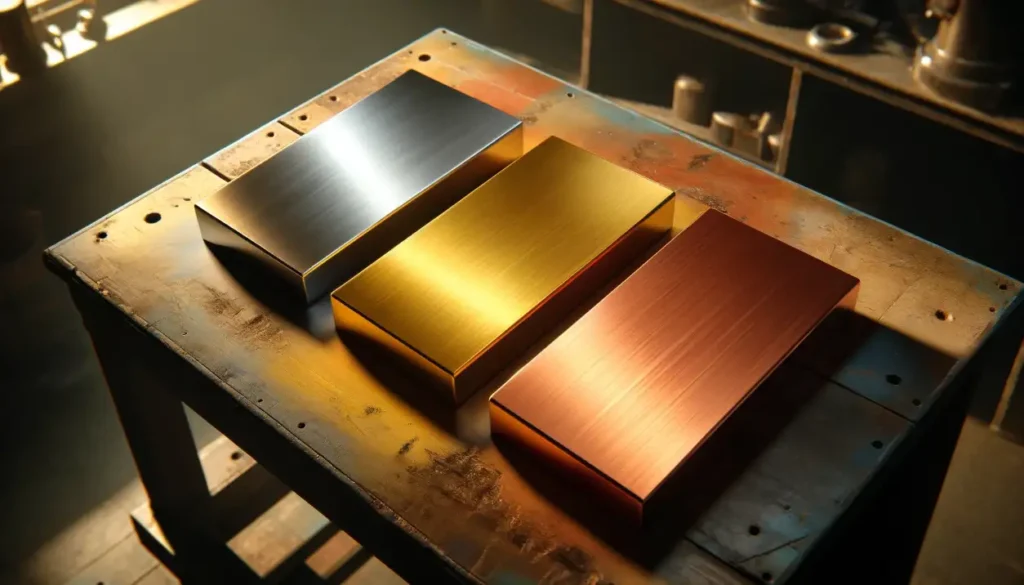
Copper Overview
Copper is a metal that has a reddish-gold color and is known for its electrical and thermal conductivity. It is soft, malleable, and ductile. This makes it an excellent choice for many manufacturing processes.
Copper Grades
Copper stands out as a versatile metal, gaining further versatility from the numerous alloys it can form. Designers create each alloy to address specific industrial needs. These are the most common grades of copper that we use:
Alloy 101
Alloy 101 has a high purity of 99.99% copper. It has the highest conductivity among all copper alloys. This makes it perfect for electrical applications that require maximum conductivity.
Alloy 110
Alloy 110, also called ETP (Electrolytic Tough Pitch) copper, is the most common copper alloy. Its copper content is a minimum of 99.90%. Its excellent formability and conductivity make it ideal for electrical and thermo-electrical applications.
Alloy 122
This alloy, also known as phosphorus-deoxidized copper, contains a small amount of phosphorus to increase its weldability and formability. Due to its high resistance to corrosion, alloy 122 is used for plumbing and heating.
Alloy 145
Tellurium copper (Alloy 145) contains a small amount of tellurium, which improves its machinability without compromising its conductivity. It is, therefore, ideal for machining operations that require precision.
Examples of Typical Applications
A wide range of applications make use of copper alloys. At Shengen, copper has many different uses.
- Electrical Wiring and Components
- Plumbing fixtures and fittings
- Customized parts
- Heat exchangers & Radiators
Brass: A Brief Overview
Brass is an alloy of zinc and copper. Adjusting the zinc content changes the properties of brass. This variation gives brass its notable features: outstanding machinability, high strength, and excellent corrosion resistance.
Brass Grades
The application often determines brass grades. We work with a variety of grades at Shengen.
Alloy 260
Alloy 260, also known as cartridge-brass, contains approximately 70% copper and 30% Zinc. Its strength and flexibility make it an ideal material for musical instruments, decorative elements, and ammunition casings.
Alloy 272
This alloy, also known as yellow brass, has a higher zinc content than Alloy 265. It is known for its bright, yellow color and is often used in decorative hardware and applications.
Alloy 330
Alloy-330 brass is a low-zinc alloy that is highly malleable. It’s ideal for radiator cores, tanks, and other applications that require extensive forming.
Alloy 360
Alloy 360 (also known as free-cutting brass or free-machining) contains a tiny amount of lead, which improves its machinability. Manufacturers widely use it in precision components like valves, plumbing fittings, and gears.
Alloy 385
This alloy, also known as architectural bronze or brass with more zinc, is brass. This alloy, known for its excellent machining characteristics and aesthetic appeal, serves well for architectural purposes and extruded shapes.
Alloy 464
Alloy 464, also known as naval brass, contains a small amount of tin to improve its corrosion resistance when exposed to seawater. Therefore, it is the preferred material for marine components and hardware.
Examples of Typical Applications
Brass grades are available in various grades, allowing for a diverse range of applications. Each application benefits from the unique properties of the alloy. At Shengen, brass finds its way into a variety of applications.
- Electronics and Machinery
- Architectural elements and decorative fixtures
- Marine Hardware and Components
- Medical and sanitary equipment
Overview Of Bronze
Bronze is a strong alloy that resists corrosion, especially against seawater. Tin is added to copper in the alloying process, increasing the metal’s durability and hardness. This makes it a good choice for heavy-duty applications.
Bronze Grades
We categorize bronze alloys by their composition. We work with different bronze alloys at Shengen.
Alloy 932
Alloy 932, also known as high-leaded bronze, is well-known for its excellent wear resistance and machinability. The alloy consists of zinc, copper, tin, and lead.
Alloy 954
Alloy 954, or aluminum bronze, contains iron, copper, and aluminum. This combination increases the strength and corrosion resistance of the alloy, particularly against seawater or acidic environments.
Examples of Typical Applications
Bronze’s versatility and durability have made it popular for various applications. At Shengen, we’ve utilized bronze in:
- Bearings and bushings
- Gears and components
- Sculptures, plaques, and other artwork
- Marine Hardware
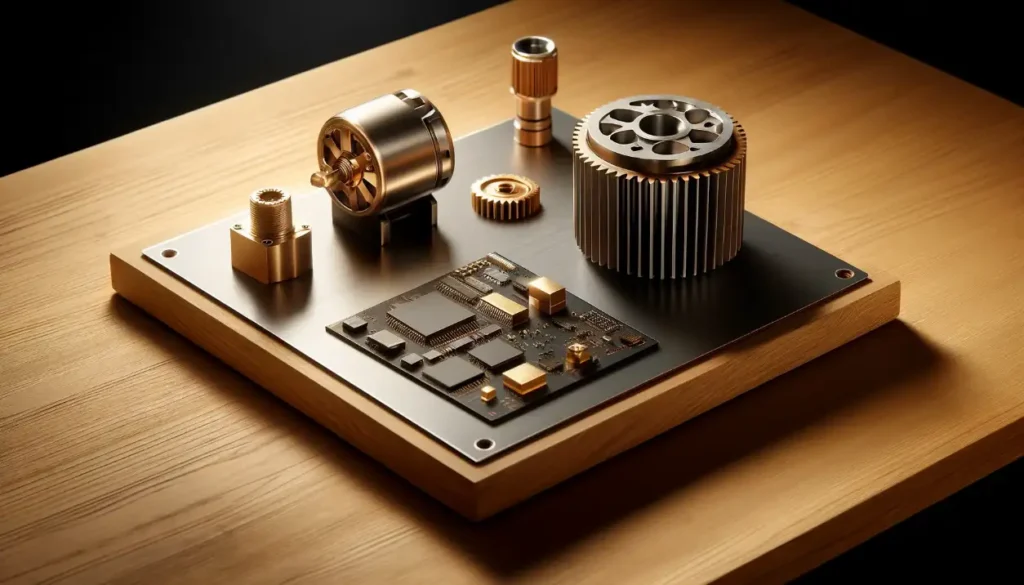
Brass Vs. Bronze Vs. Copper: Material Comparison
Brass, bronze, and copper have unique properties that can affect a product’s longevity and functionality. Compare these materials based on several factors that will help you decide.
Element Composition
- Copper has a high conductivity and is malleable.
- Brass consists of zinc and copper alloys.
- Bronze consists primarily of copper and zinc, although other elements such as nickel, phosphorus, or aluminum can be added to meet specific requirements.
Physical Properties/Appearance
- Copper is a vibrant reddish-orange color.
- Brass is yellowish due to zinc content, making it appear similar to gold.
- Bronze is a dark, muted brown with a hint of gold.
Corrosion resistance
- Copper is a natural copper alloy that offers high corrosion resistance.
- Brass is also resistant to corrosion, especially in freshwater. However, it may corrode under certain acidic conditions.
- Bronze is resistant to corrosion caused by seawater and, therefore, ideal for marine applications.
Strength (Yielding and Tensile strength)
- Copper is a good material for strength. However, its alloys tend to be stronger because of the work of hardening or alloying elements.
- Brass is a medium to high-strength brass, depending on its zinc content. A higher zinc content will generally reduce strength.
- Bronze has a higher yield strength than copper or brass and is therefore suitable for heavy loads applications.
Thermal and electrical conductivity
- Copper is the material with the highest thermal and electrical conductivity.
- Brass is a brass alloy with excellent thermal conductivity but fewer electrical properties than copper.
- Bronze has a lower thermal and electrical conductivity due to the presence of tin.
Weight
- Brass, Copper, and Bronze are all slightly different in weight. Copper is the heaviest, while bronze is the lightest. This depends on the alloy composition.
Hardness
- Copper can be hardened by hardening it through work.
- Brass and bronze are both more complex than copper. Bronze is usually the hardest of the two metals, primarily when alloyed with aluminum or nickel.
Machinability
- Copper can be machined easily, but it is soft and sticky.
- Brass has a reputation for excellent machinability.
- Bronze has a range of machinability. Alloys with lead tend to be easier to machine.
Weldability
- Copper can be welded but requires careful handling due to its high thermal conduction.
- Brass is a metal that can be welded. However, the presence of zinc may cause zinc vaporization and require special handling.
- Bronze can be used for welding. However, the filler material and technique must be selected according to the alloy.
Durability
- Copper has a high corrosion resistance and is malleable.
- Brass is a durable material, particularly in environments where zinc corrosion does not occur.
- Bronze has a high corrosion resistance and is highly durable in harsh environments.
Melting point
- Copper melts at around 1085degC.
- Brass is a metal that melts at lower temperatures, usually between 900degC and 940degC, depending on its composition.
- Bronze is a bronze alloy with a melting point that varies from 850degC to 1000degC, depending on the alloy.
Brass Vs. Bronze Vs. Copper: Quick Comparison
| Property | Brass | Bronze | Copper |
|---|---|---|---|
| Element Composition | Copper (55-95%) + Zinc | Copper (80-90%) + Tin + Other Metals | Pure Copper (99%+) |
| Appearance | Shines with a pale yellow hue, boasting a metallic sheen | Reddish brown color, metallic luster | Dazzles in an orange-red color, metallic luster |
| Corrosion Resistance | Intermediate | Stands tall with very good resistance | Matches bronze with its very good resistance |
| Yield Strength | Ranges from 95 to 124 MPa | A robust 125-800 MPa | Gentle yet firm at 33.3 MPa |
| Tensile Strength | Strong at 338 to 469 MPa | Versatile, ranging from 350 to 635 MPa | Solid with 210 MPa |
| Thermal Conductivity | Warm at 109-121 W/mK | Adaptable, spanning 24-108 W/mK | Hot, with 210-400 W/mK |
| Electrical Conductivity | High, though not as high as copper | Moderate, trailing behind brass and copper | Peaks with very high conductivity |
| Hardness | Resilient at 65-95 BHN | Wide-ranging from 60 to 290 BHN | Tough within 60-95 BHN |
| Machinability | Ranges from good to excellent | Sits comfortably from fair to good | Fair, with a touch of challenge |
| Weldability | Friendly for welders, showing good capability | Presents a challenge with poor adaptability | Shines with excellent weldability |
| Melting Point | Malleable at 900-940°C | 1085-1130°C | Stands unified with bronze at 1085°C |
Bronze vs. Brass vs. Copper: Choose The Right Material for Your Projects
The suitable material for a project is crucial. These are the differences between bronze, copper, and brass.
Prices
- Copper has a high conductivity and is widely used in electrical applications. It is the most expensive metal.
- Brass is cheaper than copper but costs more than bronze due to the cost of zinc and manufacturing.
- Bronze tends to be less expensive than Copper, but the price can vary depending on its alloy and tin content.
Degree of Flexibility
- Copper has excellent flexibility and is ideal for applications that require a material that can be bent or molded easily.
- Brass is flexible brass that can be bent or shaped to a certain degree without losing strength or integrity.
- Bronze has a higher hardness and strength than copper or brass. This makes it less flexible. It is, therefore, less suited to applications that require significant bending and shaping.
Uses
- Copper has excellent conductivity flexibility and is used widely in electrical wiring, heating systems, and plumbing.
- Brass, with its gold-like appearance, is used for fixtures, fittings, and musical instruments. The antimicrobial properties of brass make it ideal for medical and sanitary purposes.
- Bronze has high corrosion resistance and is often used for bushings, bearings, and marine hardware.
Maintenance, Care and Repair
Shengen is committed to ensuring the durability and perfect condition of metal products. Copper, brass, and bronze products require proper maintenance, care, and repair to maintain their aesthetic and functional integrity.
How to Prevent Corrosion & Tarnish?
Cleaning Guide
- Copper & Brass: A mixture of baking soda and lemon juice can remove tarnish with a soft, clean cloth. Rinse with water and then dry thoroughly.
- Bronze: Clean bronze with a soft bristle brush and soapy, warm water. Apply a thin coat of microcrystalline wax and gently buff.
Long-Term Preservation Techniques
- Environment Control: Store metallics in low-humidity environments to reduce corrosion. To control moisture, use silica gel packs to cover display cases and storage areas.
- Protective coatings: A clear wax or lacquer can be applied to copper, brass, and bronze objects, providing a protective layer and reducing the need for frequent cleaning and polishing.
Repair and Restoration
How to Repair Common Damages at Home
- Minor Scratches: You can remove small scratches and dents from copper and brass using a polishing compound and a soft cloth. However, treat bronze items with more caution to avoid damaging the patina.
- Corrosion and Tarnish: Gentle cleaning and polishing can address the early stages of corrosion and tarnish.
When to Hire Professional Restoration
- Antiques or Items of Value: For items with significant sentimental or monetary value, seeking professional restoration is advisable.
- Severe damage: Professionals can perform more extensive repairs on severely damaged items, such as recasting bronze parts or treating corrosion professionally.
- Complex Mechanisms: Items with intricate mechanisms or details (such as clocks or mechanical devices) should only be handled by experts to prevent further damage.
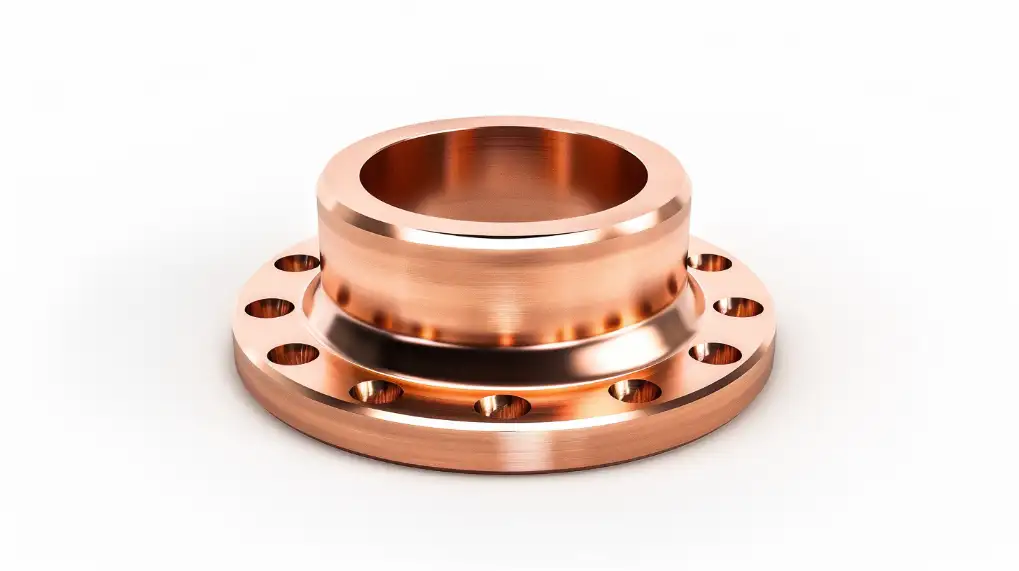
Conclusion
I have shared my insights on copper, brass, and bronze’s unique characteristics, applications, and care techniques. Each material boasts unique advantages and properties and is used across various industries. Understanding the differences between these materials is essential for choosing the best material for your needs.
Do you need a reliable sheet metal parts manufacturer? Shengen is the place to go. We specialize in sheet metal laser cutting, bending, surface finish, and sheet metal welding. Reach out to Shengen Today and seek help from professionals!
FAQs:
What is the best: bronze, copper, or brass?
The answer depends on your specific project requirements. Copper is the most electrically conductive metal and is also highly ductile. Brass is machinable. Bronze is known to be durable and corrosion-resistant. It depends on whether you need electrical conductivity, resistance to corrosion, aesthetics, or mechanical properties.
Can brass, bronze, and copper be used interchangeably?
Due to their differences, metals cannot be interchangeable. A metal’s specific application depends on its unique properties.
How can I tell if a piece of brass, bronze, or copper is genuine?
It can be difficult to identify these metals, but here are some tips:
- Copper is a reddish-brown color. Copper is the most likely to oxidize and develop a green patina with time.
- Brass has a yellowish-gold color due to its zinc content. It will tarnish into a duller brown or yellow but won’t turn green like copper.
- Bronze is a darker, brownish tone with a hint of gold. It’s different from the other two.
What are some of the common misconceptions about these metals?
- “Copper is turning green because it is deteriorating”: Verdigris (a green patina) on copper acts as a protective coating that helps to prevent further corrosion.
- “Brass is the same as bronze”: Although copper-based alloys (zinc in brass and tin in bronze) are present, they have different properties and uses.
- “All Bronze is the Same”: Manufacturers tailor various bronze alloys for specific applications.
What can I do to contribute to the sustainability of these metals when I use them?
Sustainable metal usage involves several practices.
- Recycling: Brass, copper, and bronze can all be recycled without losing their properties.
- Maintenance and Longevity: Select the suitable material to ensure longevity.
- Source: When possible, purchase metals from suppliers that prioritize sustainable practices.
More Resources:
Understanding Copper’s Conductivity – Source: Wikipedia
Copper Alloys for Marine Environments – Source: Copper
Copper metal cleaning and care – Source: Thompson
Hey, I'm Kevin Lee

For the past 10 years, I’ve been immersed in various forms of sheet metal fabrication, sharing cool insights here from my experiences across diverse workshops.
Get in touch

Kevin Lee
I have over ten years of professional experience in sheet metal fabrication, specializing in laser cutting, bending, welding, and surface treatment techniques. As the Technical Director at Shengen, I am committed to solving complex manufacturing challenges and driving innovation and quality in each project.

